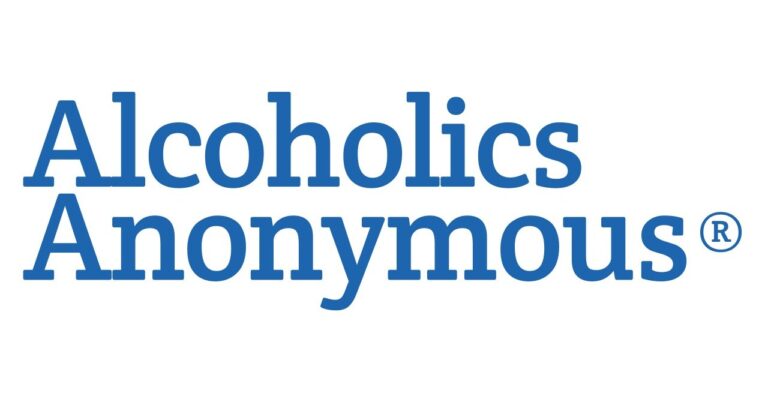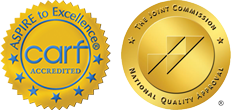The idea for the 12-Step program was originally created and used by Alcoholics Anonymous. It is a plan that was developed with 12 steps to help addicts overcome their compulsions and addictions. The theory of this program is that individuals can help each other achieve and maintain sobriety. The healing can only happen once the addict has surrendered themselves to a higher power. The 12-step movement has successfully helped many people. Some struggle with the significant religious aspect of the program. Some similar programs developed involve the 12-step methodology but are designed to appeal to individuals who want a less religious foundation for their treatment.
History
The original model for a 12-step program began in 1938 by Alcoholics Anonymous (AA). This is when AA founder Bill Wilson wrote out his idea for it. The 12-step program resulted from his many experiences and vision of alcoholism. Wilson wrote about the very positive experiences alcoholics had when they were able to share their stories of addiction with one another. Wilson created his program and it is now referred to as the Big Book. The steps of the 12-step program were created by combining concepts from other teachings he’d encountered. This included a six-step program promoted by an organization that called itself the Oxford Group. The original 12-step program was created from a spiritual, Christian inspiration. It taught alcoholics to seek help from a greater power. This should be combined with help from peers dealing with the same struggles associated with addiction.
Flourishing
The model for the 12-step program is based on the premise that addicts working together is important. This is part of helping each other obtain and keep abstinence from substances or behaviors that are the source of their addiction. It can happen with meetings where they can share experiences and provide support to one another. According to an article in the journal Addiction Research and Theory, 12-step programs are responsible for high levels of what is known as flourishing. This is developing positive mental health that is a major factor in addicts experiencing longer-term recovery. In a study, those who maintained sobriety had a higher chance of flourishing in the longer term. Over 30 percent were flourishing after only three months. Approximately 40 percent were flourishing after 12 months.
Process
In 12-step programs, there are three dimensions to a person. They are spiritual, physical, and mental. The problems focused on are believed to exist in each of these dimensions. The physical dimension is believed to be an allergy-like reaction by the body causing a desire to keep using a substance once an individual has started using it. The First Step in these programs is for an addict to admit they are powerless when it comes to the behavior associated with their substance abuse. They must recognize their lack of control. The mental dimension is referred to as the cognitive process that causes a person to repeat their compulsive behavior. It deals with the lack of choice in an addict’s mind when it comes to the substance they abuse. The spiritual dimension deals with self-centeredness. The goal is to replace an addict’s self-centeredness with a willingness for self-sacrifice and a moral consciousness. This is achieved with unselfish constructive action.
Mental And Emotional Transformative Practices
When a 12-step program is properly utilized, it will provide a person with certain tools to battle their addiction
*An addict will develop tools to help them continue the process of sobriety during their entire life.
*The ability for an addict to admit and recognize they have an addiction problem.
*Developing compassion for those who have been impacted by addiction and others who are struggling with it.
*Acceptance of the fact that their addiction is real, and they’ve decided to seek to handle it with an outer guide.
*Obtaining self-acceptance and developing the ability to change behaviors.
*Self-awareness and observation concerning behaviors that started because of the addiction and are part of it as well as promoting self-restraint.
Do you have a loved one struggling with addiction?
We know how hard that can be. Give us a call to find out what options you have.
*Embracing the practice of restraint and developing self-esteem.
*An opportunity to practice restraint and build self-esteem with a person’s positive capabilities.
Sponsorship
A sponsor is an experienced person involved in recovery. They will guide the less-experienced addicted person through a 12-step program. New members are encouraged to seek out and develop a relationship with at least one sponsor. The sponsor should be a person who has taken the 12-step program. A sponsor will share their experiences with the recovering addict concerning hope, strength, and more. A sponsor is not a professional therapist. They are people who are also dealing with an addiction and will share their experiences in the 12-step program.
Effectiveness
The largest of the 12-step programs is Alcoholics Anonymous and the next largest is Narcotics Anonymous. Alcoholics Anonymous is the program from which all other 12-step programs are created. Most of the 12-step programs are designed to address substance abuse or other illnesses. Approximately 20 percent of the 12-step programs are utilized for substance addiction recovery. According to the NIH, 12-step programs have helped many people obtain longer-term abstinence when addicts regularly attend meetings. It is also associated with improved psychosocial functioning.
Types Of Programs
There are different types of 12-step programs available worldwide. The 12-step programs have been applied to recovery from a variety of addiction-related issues. The rest of them are designed to address various problems such as depression, debt, sexual addiction, eating disorders, gambling, and more. There have been group programs such as Nar-Anon and Al-Anon which are designed to help families facing substance use disorders.
Confidentiality
The tradition of the 12-step program is to encourage members to follow the spiritual principle of anonymity. This includes the public media. Members are asked to show respect for one another’s confidentiality. This is an expectation of those involved in this type of program. There are no legal consequences associated with revealing information concerning any type of information disclosed during a 12-step meeting. Professionals and paraprofessionals who recommend addicts to a 12-step group will try to avoid both license problems and civil liability. This is done by telling an addict any statement they make during a meeting could be disclosed.
All 12-step programs utilize some elements that are similar to the original program. Many addiction specialists agree they are best to be used as a supplemental approach to treating addiction. The 12-step program was not developed by scientific researchers, clinicians, or therapists. It was created by common people trying to develop a way to help those who are struggling to overcome their substance abuse issues.
https://www.ncbi.nlm.nih.gov/pmc/articles/PMC3753023/
https://axisresidentialtreatment.com/12-step-programs/psychology/
https://pubs.niaaa.nih.gov/publications/arh23-2/093-98.pdf





